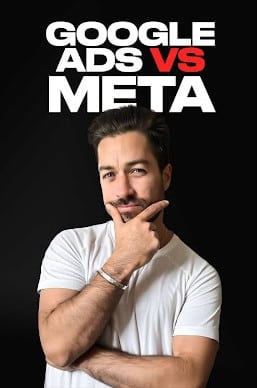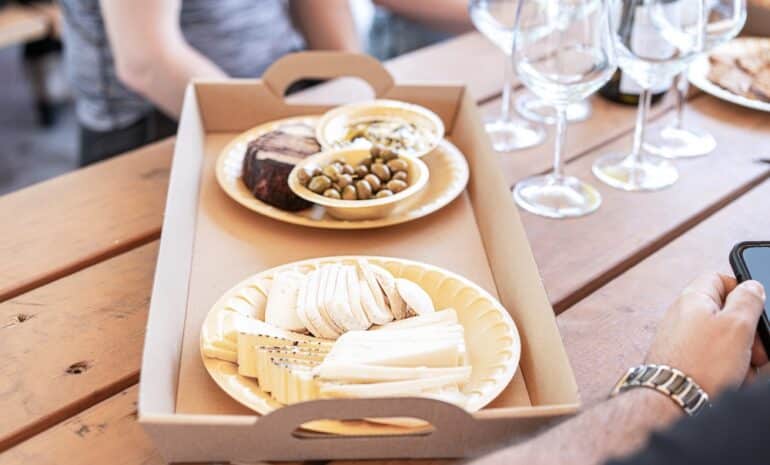Advertising is the secret ingredient that many successful restaurant owners swear by. However, with so many platforms to choose from, it’s easy to feel overwhelmed. Two of the most popular restaurant advertising platforms, Google Ads and Facebook Ads, each bring unique opportunities to the table. The question is, which one is right for your restaurant? Whether your goal is to boost reservations, connect with a local audience, or increase visibility, this guide will walk you through the main differences between Google Ads vs. Facebook Ads and how to maximize ROI successfully.
Organic Posts vs. Ads: An Introduction
Finding the right blend of organic and paid advertising is essential for digital marketing success. Both have their own unique roles in growing your brand and connecting with your audience.
Organic posts don’t require any money upfront—they’re all about sharing content with your followers, building relationships, and encouraging engagement. However, with ever-changing algorithms, it can be challenging to reach a significant portion of your audience through organic posts alone.
Ads, on the other hand, are your go-to for quick results. With paid campaigns, you can target specific audiences, get instant visibility, and measure your success.
Think of it this way: organic posts help you build trust and authenticity over time, while ads give you the power to reach the right people, right away. Striking the right balance between the two is key to creating a strong social media strategy.
Now, let’s break down two of the top restaurant advertising platforms—Google Ads and Facebook Ads.
Google Ads vs. Facebook Ads: Understanding the Basics
To make an informed decision, it’s essential to understand each platform’s core strengths.
Google Ads
Think of Google Ads as your digital billboard for intent-based marketing. Users turn to Google to search for specific things, such as “best Italian restaurant near me” or “vegan brunch spots NYC.” Google Ads puts your restaurant on the map—literally—by appearing in search results or on local map listings.
Strengths of Google Ads
- High-Intent Audiences: You’re reaching people who are actively searching for restaurants like yours.
- Local Targeting: Ideal for targeting diners within your area using local map ads or keywords.
- Pay-Per-Click (PPC) Model: You only pay when somebody clicks on your ad.
However, Google Ads can be competitive, especially for broader keywords like “Italian restaurant,” where larger chains may dominate.
Facebook Ads
Facebook Ads, on the other hand, thrive on user engagement and creating awareness. They allow you to reach potential diners who may not currently be thinking about dinner plans but could be tempted by a drool-worthy image of your signature dish or a special offer.
Strengths of Facebook Ads
- Visual Appeal: Perfect for showcasing dishes and creating excitement around your brand.
- Audience Segmentation: Highly refined demographic, interest, and behavior targeting.
- Cost-Effective Reach: Often provides better visibility at a lower cost compared to Google Ads.
But Facebook’s audience isn’t actively “searching” for restaurants, meaning the ads work best for enticing eyeballs and building brand preference over time.
Each platform shines in its own way when it comes to restaurant advertising. Here’s how both can cater to your needs.
Google Ads Benefits for Restaurants
Be Seen When It Matters Most
When a diner types “brunch near me” into Google, you want your restaurant to appear in those top search results. With Google Ads, you’re directly targeting people who are actively looking to dine now or soon.
Boost Local Discoverability
For restaurants, being visible on Google Maps with location-based ads is a game-changer. You can showcase your business details, opening hours, and customer reviews right where it matters most.
Track Results With Precision
Google Analytics allows you to measure the number of clicks, reservations, or even orders your ads generate, giving you clear insights into ROI.
When to Use Google Ads
Google Ads is worth prioritizing if your primary goal is to get immediate clicks and conversions. For example:
- Increasing reservations for fine-dining restaurants.
- Promoting food delivery for cafes or pizzerias that cater to online orders.
- Generating foot traffic for tourists searching for places to eat around your area.
Facebook Ads Benefits for Restaurants
Craft a Visual Story
Food is visual, and Facebook (and Instagram, which it owns) is built for showcasing gorgeous food photography or videos. A well-designed carousel ad displaying your top dishes can be irresistible to users.
Run Promotions That Convert
Facebook Ads are fantastic for launching limited-time offers, discounts, or events at your restaurant. For example, advertise a “Happy Hour Thursday” special and watch engagement grow.
Engage with the Community
Facebook allows you to build connections by having conversations, responding to comments, and even asking for feedback on your menu. This builds trust and long-term loyalty.
When to Use Facebook Ads
If your focus is building brand awareness or creating buzz around your restaurant, Facebook is a better fit. For example:
- Showcasing new menu items with vibrant videos.
- Reaching out to local events or foodie communities with tailored ads.
- Promoting engagement through contests like “Caption this dish to win a free meal!”
How Dineline Designs Custom Strategies for Restaurants
Mastering restaurant advertising platforms successfully takes time, creativity, and a clear strategy. That’s where Dineline shines.
At Dineline, we specialize in helping restaurants hit their advertising goals using a data-driven approach. Here’s how we do it:
Creating Custom Campaigns
Every restaurant has unique needs. Whether you’re promoting a grand opening, driving traffic during quiet hours, or launching new menu items, we create tailored campaigns to fit your goals and budget.
Leveraging Multiple Platforms
Don’t choose just one—maximize the strengths of Google and Facebook by leveraging both through coordinated efforts. For example, we use Facebook Ads for running exciting visuals of your top dishes, which build intrigue and direct traffic to Google Ads for diners actively searching for the “restaurant with the incredible burger.”
Boosting ROI With Data
Our team uses conversion tracking and analytics tools to measure what’s working and then optimizes your campaigns for better results. Explore our success stories to see how other restaurants have achieved fast growth and increased revenue with Dineline.
Align Your Ad Strategies With Your Goals
Ultimately, the best advertising strategy for your restaurant depends on your goals.
Are you looking to drive immediate reservations or orders? Google Ads is your go-to. Want to create buzz and engage your audience visually? Facebook Ads is the perfect match.
For many restaurant owners, however, the smartest move is to use both platforms strategically, leveraging their unique strengths to build a comprehensive advertising approach.
Not sure which platform to choose?
That’s where Dineline can guide you. With proven results and data-driven strategies, our team will help design a winning ad strategy for your restaurant.
Book a discovery call today.


